Meta Description: Get the latest, most detailed analysis of the Samsung Galaxy S26, S26 Pro, and S26 Ultra. Explore the game-changing “Flex Magic Pixel” AI privacy screen, camera upgrades, Exynos 200 vs. Snapdragon performance, release date, and price. Is it worth the wait?

Introduction: A New Galaxy on the Horizon
Setting the Stage
As the global smartphone market matures, the annual release of a new Samsung Galaxy S series has become a landmark event, setting the tone for the Android ecosystem for the year to come.
Yet, the forthcoming Galaxy S26 series, anticipated for early 2026, appears to be more than a simple iterative update. It represents a potential strategic realignment for Samsung, a calculated response to an increasingly competitive landscape where Apple’s iPhone 18 is poised to continue its dominance and Google’s Pixel 11 series is rapidly gaining ground with its own silicon and AI prowess.
The narrative emerging from a torrent of leaks and industry reports paints a complex picture of the Galaxy S26. It is a series defined by a trio of core themes: a revolutionary approach to on-device privacy, a significant deepening of its commitment to integrated artificial intelligence, and a contentious hardware strategy that blends bold advancements with surprising conservatism. This is the story of a flagship fighting not just to be the best, but to be the most relevant in a new era of mobile technology.
The Rumor Mill at a Glance
The pre-launch buzz surrounding the Galaxy S26 is a whirlwind of exciting and controversial revelations. The most significant shift appears to be a complete overhaul of the product lineup, with the familiar “Plus” model reportedly being retired in favor of a new “Pro” and a super-slim “Edge” variant, fundamentally changing Samsung’s go-to-market strategy.
At the heart of the technological leap is the rumored “Flex Magic Pixel” display—a groundbreaking, AI-powered privacy screen poised to be the series’ killer feature.
Under the hood, a fierce battle is brewing between Qualcomm’s next-generation Snapdragon processor and Samsung’s own ambitious 2nm Exynos 2600 chip, a comeback story with massive implications for the entire semiconductor industry.
Yet, this innovation is juxtaposed with mixed signals from the camera department, where rumors of a major optical upgrade clash with reports of reused sensors and even a potential downgrade, creating a puzzle for prospective buyers. This report will dissect every facet of these rumors to provide the most comprehensive and analytical preview of what to expect from 2026’s most anticipated flagship.
Galaxy S26 Release Date and Price: Planning Your Next Upgrade
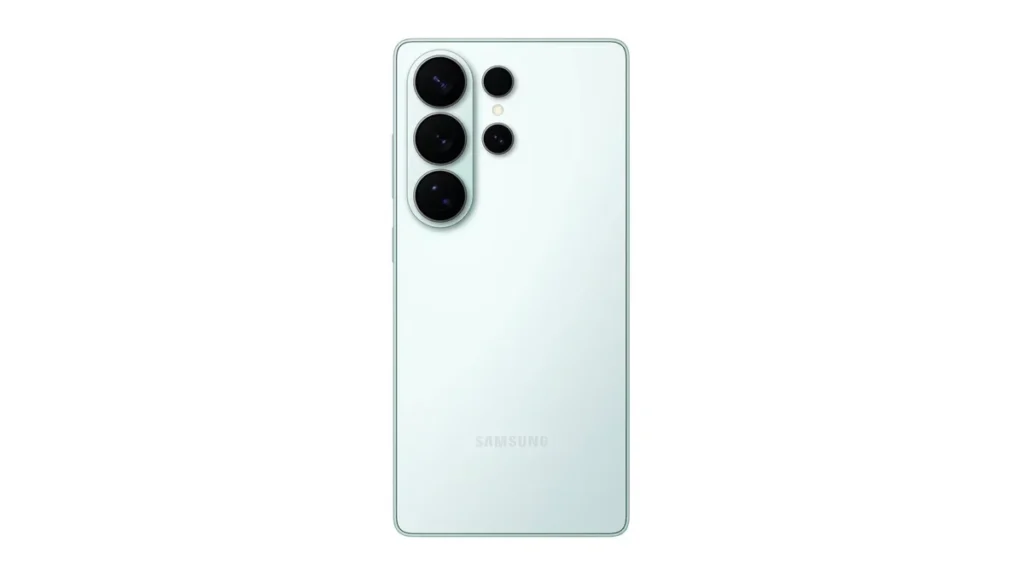
The Launch Window
Samsung has established a highly consistent and predictable launch cadence for its flagship Galaxy S series, and all indicators suggest the Galaxy S26 will follow this well-trodden path. Analysis of previous Unpacked events points squarely to a global announcement in late January or early February 2026.
Recent launches, such as the Galaxy S25 on January 22 and the Galaxy S24 on January 17, reinforce this early-year window, with a wider market release typically following about two weeks later.
This timing is a deliberate strategic maneuver. By scheduling its main event between the Consumer Electronics Show (CES) in early January and Mobile World Congress (MWC) at the end of February, Samsung effectively carves out a period where it can dominate the technology news cycle without distraction. This allows the company to claim the title of the first major flagship launch of the new year, setting the benchmark against which all subsequent Android devices will be measured.
Pricing Strategy: Stability in an Unstable Market
Despite the significant technological upgrades and lineup changes, the prevailing consensus is that Samsung will aim for price stability with the Galaxy S26 series. Leaks suggest that pricing will remain largely static compared to the Galaxy S25 lineup, a move likely intended to maintain a competitive edge in a price-sensitive market.
A key factor enabling this stability is the reported cost of the next-generation Qualcomm Snapdragon 8 Elite Gen 2 chipset, which is not expected to be more expensive for Samsung to procure than its predecessor. This removes a major driver of price inflation.
However, a minor degree of uncertainty remains. External economic factors, such as potential shifts in U.S. trade policies or broader inflation, could compel Samsung to make modest adjustments, though a substantial price hike appears unlikely.
| Device Lineup | Galaxy S24 (2024) | Galaxy S25 (2025) | Galaxy S26 (2026) Projected* |
| Base Model | Galaxy S24: $799 | Galaxy S25: $799 | Galaxy S26 Pro: $799 |
| Mid-Tier Model | Galaxy S24+: $999 | Galaxy S25+: $999 | Galaxy S26 Edge: $1,099 |
| Top-Tier Model | Galaxy S24 Ultra: $1,299 | Galaxy S25 Ultra: $1,299 | Galaxy S26 Ultra: $1,299 |
Export to Sheets
*Projected pricing is based on current rumors and is subject to change. The Galaxy S26 Edge is projected to align with the S25 Edge’s debut price.
The Killer Feature: “Flex Magic Pixel” and the Dawn of True Screen Privacy
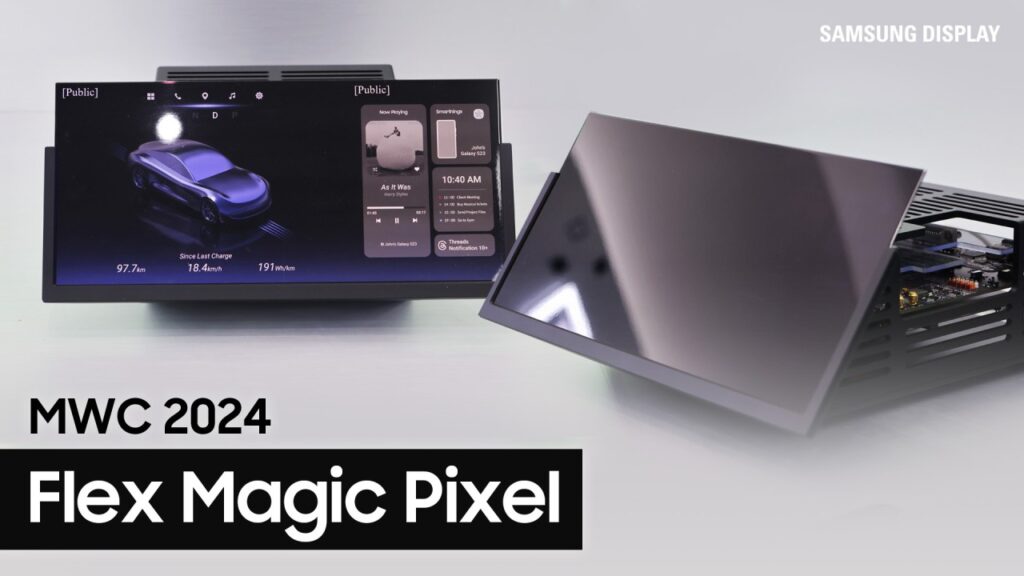
Beyond the Sticky Film
In a market saturated with incremental camera and performance bumps, a truly revolutionary feature is rare. For the Galaxy S26 Ultra, that feature is rumored to be “Flex Magic Pixel,” a groundbreaking display technology that promises to redefine screen privacy.
This is not a simple software filter or an aftermarket accessory; it is a profound hardware-level innovation integrated directly into the OLED panel itself, designed to solve a modern problem without compromising the user experience.
For years, privacy-conscious users have relied on stick-on plastic films that, while effective at blocking side-angle viewing, come with significant drawbacks: they permanently reduce screen brightness, wash out colors, and degrade the quality of the premium display that users paid for. Flex Magic Pixel is engineered to eliminate this compromise entirely.
How It Works: AI at the Pixel Level
The technology’s brilliance lies in its dynamic and intelligent control over light at a microscopic level. Flex Magic Pixel utilizes artificial intelligence to manipulate the viewing angle of individual pixels on the OLED display.
The system is designed to be automated and context-aware. For instance, if the phone’s AI detects that a user has opened a sensitive application like a mobile banking app or a private chat while in a public space, it will automatically activate the privacy mode.
When engaged, the technology adjusts the path of light emitted from the pixels, narrowing the field of view so that the screen’s content is only visible to the person looking directly at it. To anyone attempting to “shoulder surf” from the side, the display will appear blurred, dim, or completely dark, effectively creating a digital privacy shield on demand. This intelligent, automated system, showcased by Samsung Display at events like MWC 2024, is a quantum leap beyond the static, quality-degrading films it aims to replace.
The Unsung Hero: CoE Technology
Enabling this futuristic privacy feature is a crucial complementary technology known as Color on Encapsulation (CoE). Already used in Samsung’s foldable phones, CoE technology involves removing the traditional polarizer layer from the OLED stack and replacing it with a color filter. This change makes the display panel thinner, improves light transmittance for greater power efficiency, and enhances color reproduction.
The synergy between CoE and Flex Magic Pixel is what makes the entire system viable without compromise. The inherent brightness and efficiency gains from the CoE technology are essential to counteract any potential light loss that might occur when the Flex Magic Pixel privacy mode is activated. This ensures that even with the privacy filter engaged, the screen remains vibrant and clear for the user.
The strategic importance of this integrated privacy feature cannot be overstated. Privacy has become a cornerstone of brand identity, particularly for Apple, and the billion-dollar market for third-party privacy screens demonstrates a massive, unmet consumer demand.
However, these accessories create a fundamental paradox: users invest in a device with a state-of-the-art display, only to cover it with a film that diminishes its primary function.
Flex Magic Pixel is Samsung’s elegant solution to this paradox. It internalizes the value of the privacy accessory market, transforming it from a clumsy add-on into a seamless, premium, integrated feature. This move cleverly addresses a tangible user pain point and elevates it into a unique selling proposition. In an era of slowing hardware innovation, this feature serves as a powerful differentiator, shifting the definition of a “next-generation” flagship away from raw specifications and toward practical, intelligent solutions for everyday problems.
A New Roster: Meet the Galaxy S26 Pro, Edge, and Ultra

Farewell, Plus Model
One of the most significant and widely reported changes for the 2026 lineup is a strategic shake-up of the model roster. Rumors consistently indicate that Samsung will discontinue the “Plus” model, which has been a staple of the Galaxy S series for years.
This decision is likely a direct response to market data suggesting the Plus variant has been the weakest seller in recent generations. Positioned awkwardly between the more affordable base model and the feature-rich Ultra, the Plus model has struggled to carve out a distinct identity.
The Galaxy S26 Pro: The New Standard
In place of the standard base model, Samsung is expected to rebrand its entry-level flagship as the “Galaxy S26 Pro”. This is more than just a name change; it’s a repositioning. The S26 Pro is rumored to feature tangible upgrades, including a slightly larger display, growing from 6.2 inches to either 6.27 or 6.3 inches, and a more substantial 4,300 mAh battery. This move aims to elevate the perceived value of the base offering.
The Galaxy S26 Edge: The Super-Slim Contender
Replacing the Plus model is a new or revived nameplate: the “Galaxy S26 Edge”. This device is designed to capture a specific niche, focusing on a remarkably thin and sleek design. Leaks suggest the S26 Edge will measure a mere 5.5mm in thickness, making it one of the slimmest flagship phones on the market. Impressively, this is achieved while still incorporating a larger 4,200 mAh battery, thanks to the use of higher-density battery cells.
The Galaxy S26 Ultra: The Undisputed Flagship
At the pinnacle of the lineup, the Galaxy S26 Ultra remains the undisputed flagship, carrying forward the legacy of the Note series. It is expected to retain its signature built-in S Pen, a key differentiator that no other competitor offers. It will also house the largest display, rumored to be a 6.89-inch panel, and will be the exclusive recipient of the most advanced technologies, such as the Flex Magic Pixel privacy screen.
This comprehensive lineup overhaul reflects a calculated “Apple-ification” of Samsung’s product strategy. The “Plus” moniker has become associated with being merely “bigger” rather than meaningfully “better.”
By adopting “Pro” for its new base model, Samsung elevates its status and better justifies its premium price point. The introduction of the “Edge” model carves out a new category focused on a single, highly marketable attribute: design and thinness.
This signals a fundamental shift in product philosophy, moving from a size-based hierarchy to a more sophisticated, persona-driven approach. This allows Samsung to target different consumer segments more precisely and compete more directly with the distinct product identities within Apple’s and Google’s portfolios.
Design and Display: A Thinner, Curvier, Bolder Look
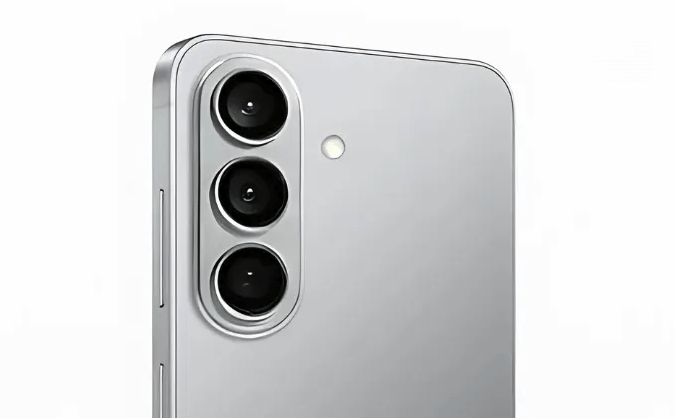
The Thinness Race is Back
A defining characteristic of the entire Galaxy S26 series is a renewed focus on slim profiles. Leaks and dummy unit measurements indicate a diet across the board, signaling a return to the “thinness race” of years past. The Galaxy S26 Pro is expected to measure between 6.7mm and 6.96mm thick, the flagship S26 Ultra is rumored to slim down to between 7.8mm and 7.9mm, and the S26 Edge is set to make a statement at a remarkable 5.5mm.
A Softer, Rounder Ultra
Perhaps the most polarizing design change is reserved for the Galaxy S26 Ultra. For several generations, the Ultra model has been defined by its sharp, squared-off corners—a design legacy inherited from the Galaxy Note series.
For 2026, Samsung is reportedly abandoning this iconic boxy look in favor of a softer, more rounded aesthetic that draws comparisons to the iPhone. This change is likely driven by a desire to improve the ergonomics of such a large device, but it has drawn criticism from long-time enthusiasts who feel it sacrifices a unique design identity.
The Return of the Camera Island
Another significant visual departure is the return of a raised camera housing. After several years of a “floating lens” design, leaked renders confirm that the S26 Pro and S26 Ultra will feature a consolidated, raised camera island. The S26 Edge, meanwhile, is rumored to adopt a different style with a wide, horizontal camera bar that spans the top of the device.
These design changes are not merely stylistic whims; they are decisions driven by engineering necessity. The reintroduction of a prominent camera bump on the Ultra, which could be up to 4.5mm thick, is a direct consequence of the new camera hardware inside.
Reports explicitly state that this extra depth is required to accommodate the larger optics and wider aperture lenses that are central to the S26 Ultra’s camera upgrades. This creates an engineering trade-off: to achieve a thinner overall profile, the bulky camera components must be consolidated into a more pronounced island. This reveals a maturing design philosophy at Samsung, where form is increasingly dictated by function.
Performance: The 2nm Exynos 2600 vs. Snapdragon 8 Elite Gen 2
The Heart of the S26
The Galaxy S26 series is set to be powered by two of the most advanced mobile chipsets of 2026: Qualcomm’s Snapdragon 8 Elite Gen 2 and Samsung’s own Exynos 2600. While some early reports have mentioned a “Snapdragon 8 Elite Gen 5,” the more consistent and credible rumors point to the Gen 2 as the processor of choice.
Exynos 2600: A 2nm Gamble
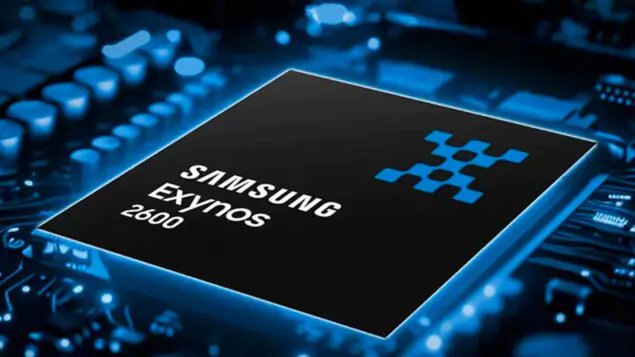
After being absent from the flagship S25 series, Samsung’s in-house Exynos chip is making an aggressive comeback with the Exynos 2600. This is an exceptionally ambitious project, as the Exynos 2600 is expected to be the world’s first flagship smartphone processor built on a cutting-edge 2-nanometer (2nm) process node.
To address the thermal issues that plagued past Exynos generations, the 2600 reportedly incorporates new thermal management features, such as a “heat path block.” Early Geekbench scores have been promising, showing the Exynos 2600 performing nearly on par with its Snapdragon rival.
Snapdragon 8 Elite Gen 2: The Proven Powerhouse
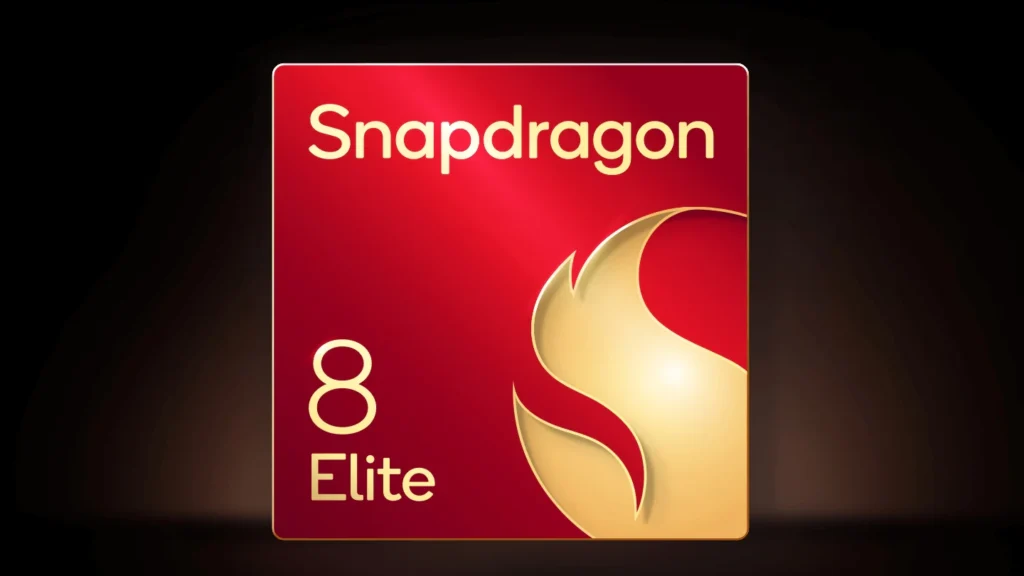
Qualcomm’s next-generation flagship, the Snapdragon 8 Elite Gen 2, will be built on an enhanced 3nm process from TSMC. It will feature Qualcomm’s powerful custom Oryon CPU cores and is expected to deliver class-leading performance, particularly in the specially optimized “for Galaxy” variant that Samsung traditionally receives.
The Regional Divide Continues
The distribution of these two powerful chips is expected to follow a familiar pattern. The top-of-the-line Galaxy S26 Ultra is rumored to receive the Snapdragon 8 Elite Gen 2 globally. The Galaxy S26 Pro and S26 Edge, however, will likely employ a hybrid strategy. Markets such as the United States, Canada, and China are expected to receive the Snapdragon version, while Europe, India, and other regions will get the Exynos 2600 variant.
Memory and Connectivity
To support the demanding on-device AI features, the entire Galaxy S26 lineup is expected to come with a generous 12GB of RAM as the standard configuration. The Galaxy S26 Ultra will likely offer an even higher 16GB RAM option for power users. On the connectivity front, the series is expected to incorporate Qualcomm’s new X85 5G modem, which promises higher speeds and improved power efficiency.
The return of a truly competitive Exynos chip is more than just a cost-saving measure for Samsung; it’s a monumental strategic play. For years, consumers in Exynos regions felt they were receiving an inferior product, leading to the so-called “Exynos lottery”.
By launching the first 2nm mobile processor and achieving performance parity with Snapdragon, Samsung’s LSI and foundry divisions are re-establishing themselves as legitimate, cutting-edge competitors to industry leaders like TSMC and Qualcomm.
The success of the Exynos 2600 has implications far beyond the mobile division, potentially attracting new foundry customers and boosting Samsung’s entire semiconductor business. For consumers, this could finally mean the end of the performance disparity.
Camera Deep Dive: A Confusing Mix of Upgrades and Stagnation
The S26 Ultra’s Main Camera: A Tale of Light and Glass

The camera system of the Galaxy S26 series, particularly the Ultra model, is shaping up to be a story of perplexing contradictions.
The headline upgrade is a significant optical improvement for the 200MP main camera. It is rumored to feature a new lens with a much wider aperture, a change that is being touted as the most substantial camera enhancement since the Galaxy S20 Ultra. This wider aperture will dramatically increase the amount of light the camera can capture, leading to significantly better low-light performance.
However, this impressive optical upgrade is paired with the disappointing revelation that the underlying 200MP ISOCELL HP2 sensor is being reused for a third consecutive generation.
The Telephoto Controversy
The telephoto system is the most contentious aspect of the S26 Ultra’s camera setup. Multiple reliable leakers have reported that the mid-range 3x optical zoom camera will be actively downgraded. It is expected to feature a smaller 10MP sensor, a clear step back from the larger sensor used in the S25 Ultra.
This is a shocking move for a flagship device, especially as competitors like Apple are making significant strides with their telephoto capabilities.
The long-range zoom camera offers little consolation. The 50MP sensor for the 5x telephoto lens is also expected to be a carryover from the Galaxy S24 Ultra and S25 Ultra, with its reuse now rumored to extend to the S27 Ultra as well. The only potential improvement here is a rumored wider aperture for the lens.
S26 Pro and Edge Cameras: An Iterative Update
The non-Ultra models appear to be receiving even more modest updates. The Galaxy S26 Pro is rumored to get a new 50MP ultrawide camera, a significant jump in resolution from the previous 12MP sensor.
However, prominent leakers have dismissed this upgrade as “useless,” suggesting that it is a change in megapixels only, without a meaningful improvement in sensor size or image quality. Furthermore, its 10MP telephoto camera is expected to use the same aging sensor that has been in use for several generations.
This seemingly contradictory camera strategy—a major investment in the main lens but cost-cutting on the sensors—can only be understood as a deliberate allocation of resources. Developing new flagship-grade image sensors is incredibly expensive.
Instead, Samsung appears to be pursuing an “optics over sensors” strategy. The company is leveraging its existing, mature 200MP sensor platform and pouring its R&D budget into developing superior glass—lenses with wider apertures that can maximize the performance of that sensor.
This allows for a marketable improvement (“better low-light photos!”) without the massive cost of a new sensor. The shocking downgrade of the 3x telephoto camera is likely the sacrifice made to fund this expensive new main lens.
This represents a high-stakes gamble. Samsung is betting that consumers will value the low-light prowess of the main camera more than a consistently high-quality, versatile zoom system—a wager that could easily backfire against competitors who offer a more balanced camera package.
Battery and Charging: An Endurance Evolution, Not a Revolution
S26 Ultra: The 5,000mAh Plateau
For users hoping for a significant leap in battery endurance, the rumors for the Galaxy S26 Ultra are likely to be disheartening. Reports and regulatory filings indicate that the device will once again feature a 5,000 mAh battery, a capacity that will have remained unchanged for six consecutive generations of Ultra models.
A Glimmer of Hope: Faster Charging?
The outlook for charging speeds is equally murky. Early speculation pointed to a long-awaited upgrade to 60W or 65W wired fast charging for the Ultra.
However, more recent and credible leaks, including information from Chinese regulatory certifications, have poured cold water on this hope, suggesting that the S26 Ultra will remain capped at 45W. This would leave Samsung significantly behind many of its competitors.
Pro and Edge: Welcome Capacity Bumps
The battery story is considerably brighter for the non-Ultra models. The S26 Pro is slated to house a 4,300 mAh battery, a solid 300 mAh increase from the 4,000 mAh cell in the S25. Similarly, the super-slim S26 Edge is rumored to pack an impressive 4,200 mAh battery, a notable jump from the 3,900 mAh capacity of its predecessor.
The Catch: Stagnant Charging Speeds
Unfortunately, these larger batteries will be paired with disappointingly slow charging technology. The S26 Pro and S26 Edge are expected to remain stuck with Samsung’s base-level 25W wired charging. In an era where mid-range phones from other brands can fully charge in under 30 minutes, a 25W speed on a premium 2026 flagship feels decidedly outdated.
This conservative approach to battery technology is likely a deliberate strategic choice, born from a deep-seated corporate caution following the infamous Galaxy Note 7 battery crisis.
While competitors aggressively push new battery chemistries like silicon-carbon to achieve massive capacities and ultra-fast charging speeds , Samsung has conspicuously avoided these technologies. The company appears to be prioritizing long-term battery health, safety, and reliability over cutting-edge specifications.
This philosophy posits that the average consumer values a battery that degrades slowly over a seven-year software support window more than one that charges in 15 minutes but may have a shorter overall lifespan. The Galaxy S26 series will serve as a crucial test of this strategy.
The AI Revolution: Perplexity, One UI 8.5, and the Soul of the Machine
Android 16 and One UI 8.5

On the software front, the Galaxy S26 series will launch with Google’s Android 16, skinned with Samsung’s own One UI 8.5 interface. This combination will serve as the foundation for what is shaping up to be Samsung’s most ambitious push into artificial intelligence yet.
The Perplexity Partnership: A Challenge to Google’s Throne
The most significant software development for the S26 is a rumored deep partnership with Perplexity AI, an AI-powered search and conversational assistant startup.
Reports suggest the deal could involve several layers of integration, including offering Perplexity as a new default assistant option, weaving its technology into native Samsung apps, and a significant financial investment from Samsung into the startup.
A Multi-AI Future

This move is part of a broader strategy articulated by Samsung executives, who have stated that the company is open to integrating multiple competitive AI agents onto its devices. The goal is to create an open platform where users can choose the AI assistant that best suits their needs.
This strategy represents a critical power play in the next great battle for mobile dominance: the battle for the AI interaction layer.
By forging a deep partnership with Perplexity—a direct competitor to Google’s core search and AI products—Samsung is strategically reducing its dependence on a single partner that is also its largest rival in the smartphone hardware space.
This is a calculated move to own the AI experience on its own devices, preventing Galaxy phones from becoming mere commodity hardware for Google’s ever-expanding AI ecosystem. This could herald the “unbundling” of AI from the OS, where a user’s preferred AI service is no longer dictated by their phone’s operating system.
The Verdict: Is the Samsung Galaxy S26 Worth Waiting For?
Weighing the Pros and Cons
The Samsung Galaxy S26 series presents a complex and nuanced value proposition, blending genuine innovation with perplexing conservatism. Deciding whether to wait for its 2026 release requires a careful consideration of its strengths and weaknesses.
Reasons to Wait:
- Revolutionary Privacy: The Flex Magic Pixel technology on the S26 Ultra is a true game-changer, offering a hardware-based privacy solution that no competitor can match.
- A Competitive Exynos: The potential for a cutting-edge 2nm Exynos 2600 chip that finally achieves performance parity with Snapdragon could deliver a top-tier experience to all users.
- Meaningful Battery Gains (for some): The significant battery capacity increases for the new S26 Pro and S26 Edge models promise improved endurance for the more mainstream flagships.
- An Open AI Future: Samsung’s multi-AI strategy, spearheaded by the Perplexity partnership, could offer a more flexible and powerful software experience.
Reasons to Hesitate:
- Ultra Endurance Stagnation: The decision to stick with a 5,000 mAh battery and potentially 45W charging for the flagship Ultra model feels outdated.
- A Confusing Camera System: The camera strategy is a high-risk gamble. The reuse of old sensors and the downgrade of the 3x telephoto camera could result in an inconsistent imaging experience.
- Iterative Design: While thinner, the new designs may not feel like a significant leap forward for some users and have been criticized for sacrificing Samsung’s unique identity.
Advice for Every User
- For Galaxy S24/S25 Owners: The Galaxy S26 is likely not a necessary upgrade. The performance gains will be noticeable but not transformative, and the camera system may not offer a clear improvement. Unless the AI-powered privacy screen is a must-have feature, holding onto your current device is a sensible choice.
- For Galaxy S23 or Older Owners: For users coming from a device that is two or more years old, the Galaxy S26 represents a massive leap forward. The jump to a 2nm/3nm processor, the advanced display technology, and the new AI capabilities will feel like a generational upgrade, making it a highly compelling option that is absolutely worth waiting for.
- For Those Considering Switching (from Apple/Pixel): The Galaxy S26 Ultra, in particular, offers unique advantages that cannot be found elsewhere, chiefly the Flex Magic Pixel screen and the integrated S Pen. However, potential switchers must weigh these strengths against the device’s weaknesses, namely the conservative battery strategy and the questionable telephoto camera system.
Samsung Galaxy S26 FAQ: Quick Answers to Key Questions
- Q: When is the Samsung Galaxy S26 coming out? A: The Samsung Galaxy S26 series is widely expected to be announced at a Galaxy Unpacked event in late January or early February 2026, with a market release following approximately two weeks later.
- Q: What is the new Samsung S26 privacy screen? A: The new feature, rumored to be exclusive to the Galaxy S26 Ultra, is called “Flex Magic Pixel.” It is a hardware-based technology built into the OLED display that uses AI to automatically narrow the screen’s viewing angle when sensitive content is displayed, making it invisible to onlookers without dimming the screen for the user.
- Q: Will the Samsung S26 have a better camera than the S25? A: It’s complicated. The Galaxy S26 Ultra is rumored to have a new main lens with a wider aperture, which should significantly improve low-light photos. However, it is also expected to reuse the same main and 5x zoom sensors as its predecessors and may even feature a downgraded 3x zoom camera. The upgrades are mixed and may not be a clear improvement in all scenarios.
- Q: How much will the Samsung Galaxy S26 cost? A: Leaks suggest that pricing will remain stable and very similar to the Galaxy S25 series. The Galaxy S26 Pro is expected to start around $799, the S26 Edge around $1,099, and the flagship S26 Ultra around $1,299 for base storage models.
- Q: Should I wait for the Samsung S26? A: If you own a Galaxy S23 or an older device, the performance and feature upgrades in the S26 will be substantial, making it worth the wait. If you currently have a Galaxy S24 or S25, the upgrade may feel more incremental, and waiting might not be as critical unless a specific new feature like the privacy screen is essential for you.
- Q: What models will be in the S26 series? A: Rumors strongly indicate a lineup change. The series is expected to consist of three models: the Galaxy S26 Pro (replacing the standard model), the Galaxy S26 Edge (a new super-slim model replacing the Plus), and the top-tier Galaxy S26 ULTRA